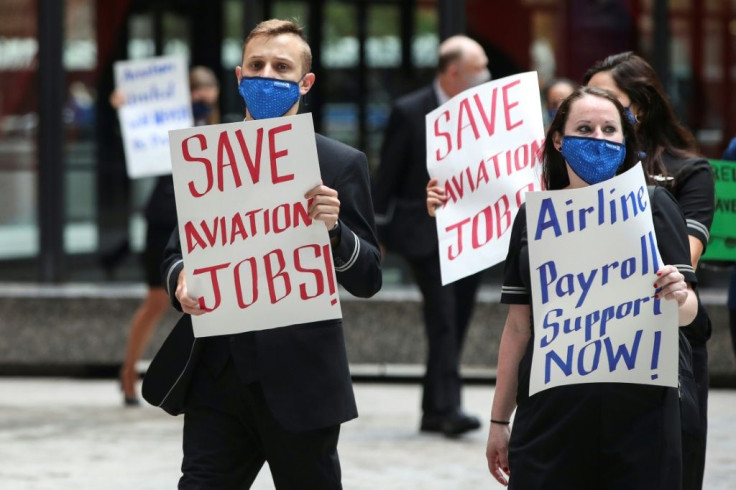US Fed Official Warns Against Inflation 'Ghost Stories'
The Federal Reserve has been too cautious in its recent policy shift allowing higher prices to boost employment, one US central banker said Friday, warning against heeding "ghost stories" about inflation.
As the United States faces the world's worst Covid-19 outbreak and is approaching 200,000 deaths, tens of millions of workers still have not returned to their jobs and the unemployment rate, though down from its peak, is at 8.4 percent, more than double the pre-pandemic level.
The Fed on Friday released a survey showing only 30 percent of workers who were laid off early in the crisis have returned to work, while 22 percent do not expect to return to their jobs.
Neel Kashkari, president of the Fed's Minneapolis branch, dissented from the Fed's decision Wednesday, which pledged to allow inflation to rise above 2 percent "for some time" to achieve the central bank's goal of maximum employment.
The statement reflects the policy shift first announced by Fed Chair Jerome Powell in August, but Kashkari said the Fed should have made a "stronger commitment to not raising rates until we were certain to have achieved" the full employment objective.
He stressed that economists and central bankers have long been proven wrong in their concerns about the threat of low joblessness sparking higher prices. And if the new policy had been in place in 2012, the Fed would have delayed increasing the benchmark lending rate by at least a year and allowed even greater employment gains, he said.
Official payroll data show only half of the more than 22 million workers who lost jobs in March and April have returned to work.
The Fed's household survey released Friday showed the greatest share of layoffs during the pandemic hit families earning less than $40,000 a year, at 28 percent, while half of all people laid off were either Black or Hispanic.
But the data also showed that families felt better about their economic situation due to government support programs, and 70 percent would be able to face a $400 emergency expense, an improvement from October.

During the recovery from the global financial crisis over the past decade, US inflation rarely hit 2 percent and then only briefly as unemployment continued to fall, reaching a historically low 3.5 percent prior to the Covid-19 pandemic.
The Fed's preferred inflation index, personal consumption expenditures, was up 1.0 percent for the year ended in July.
While central banks generally worry about uncontrolled price increases, low inflation is a concern as well since it can cause a downward cycle that is hard to counteract.
Many central bankers believed that "once inflation started climbing, it might accelerate, requiring a very strong policy response to control it," Kashkari said. He referred to such theories as "ghost stories, because there was no evidence they were true but they also couldn't be ruled out."
The Fed has tools to address rising inflation, but little in its arsenal to counteract the current cycle of low inflation, he said.
"Persistent low inflation is posing challenges to advanced economies around the world," and if the new policy helps to generate higher inflation that led to a rate hike "I think we would consider that a high-class problem," Kashkari said.
Kashkari was one of two members of the Fed's policy committee to dissent from the vote Wednesday. The other, Dallas Federal Reserve Bank President Robert Kaplan, has not issued a statement explaining his decision, but indicated he wanted greater "flexibility" in the policy.
© Copyright AFP {{Year}}. All rights reserved.





















